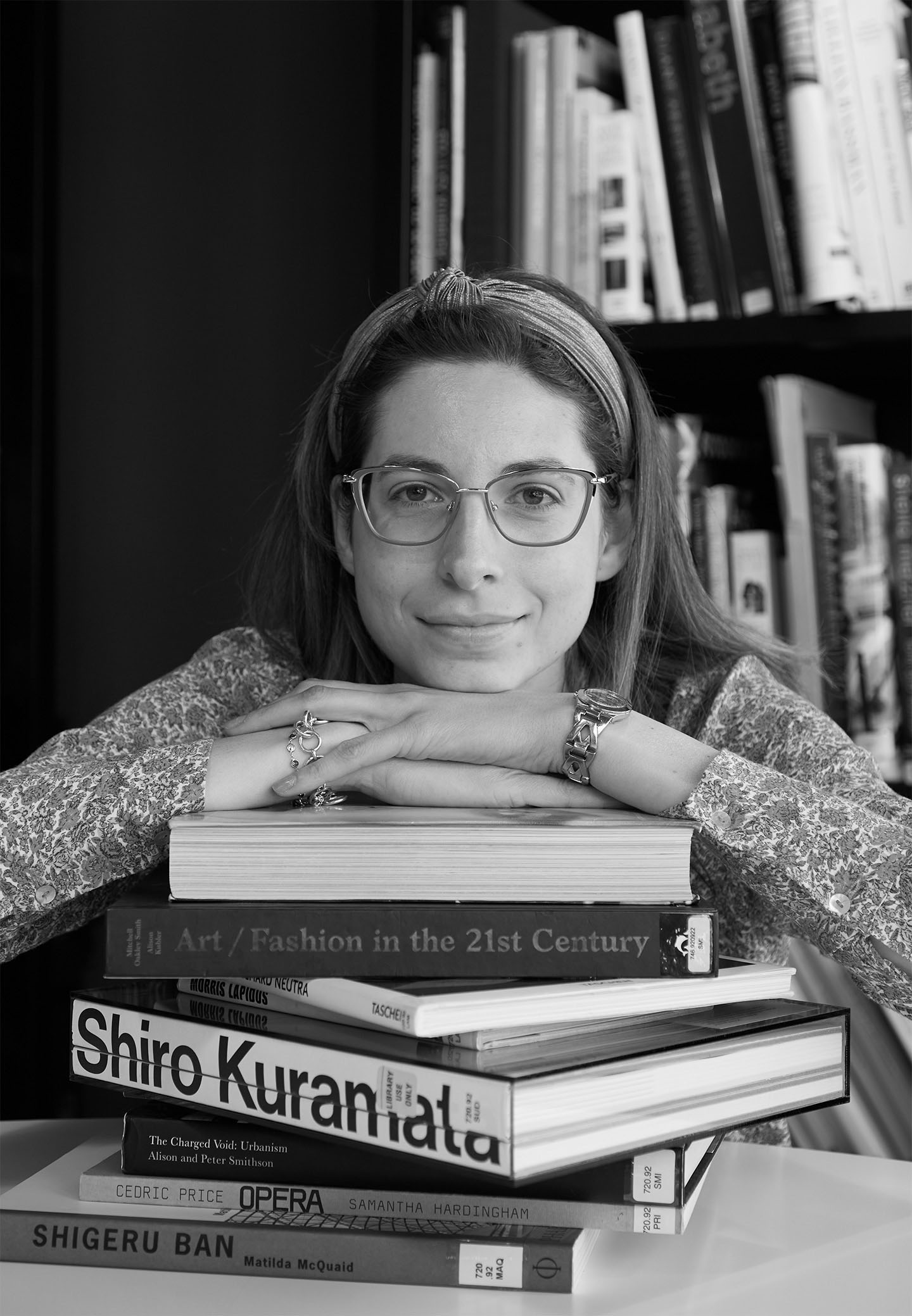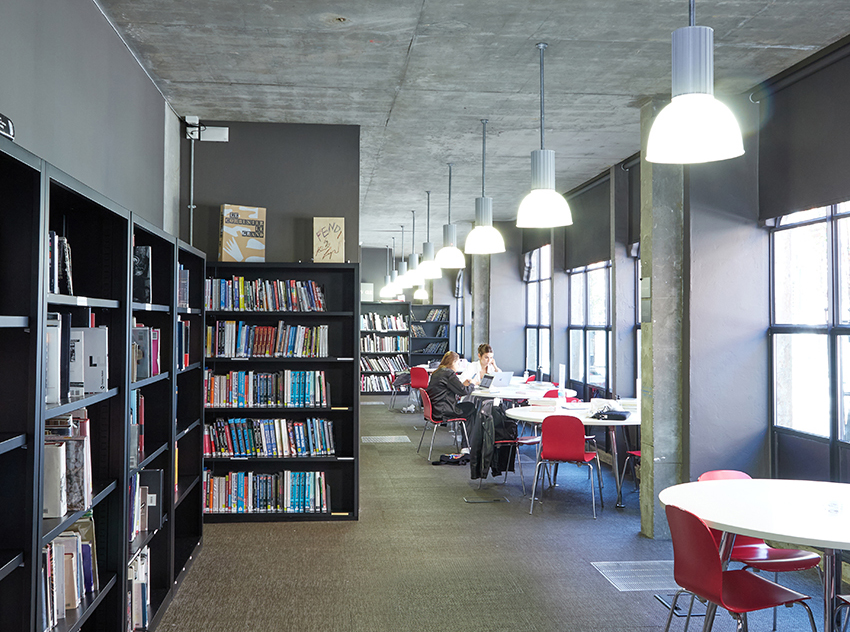


The library is where you get inspired at a deeper level and start discovering the unknown. Even for creative studies, research is a practical matter that cannot be avoided. What we want our students to achieve is to research their chosen topic from a global perspective.
It is a fact most of the fashion and cultural research materials available to us focus on a western fashion discourse. However, the multicultural background of students at Marangoni schools brings their international values to a new level of discussion.

Istituto Marangoni's London campus library So, we encourage students to bring those values to their academic research approach. To reach a demanding level of new resources, the London Library is expanding the collection to break socio-cultural boundaries, expand academic knowledge and unlock the understanding of fashion and society for a more global perspective.
My role as Librarian at Marangoni schools in London is to guide the students with an educational mindset through relevant and academic resources. However, the input for generating ideas and the ambition to investigate a topic come from a deep insight reading.
How to build a methodological approach to your creative research? Starting from good books and publications
With her long experience as a fashion educator, Julia Gaimster admitted students often struggle “with how to conduct visual research and how to analyse, interpret and use their research” (Visual Research Method in Fashion, 2011).
So, when it is time to initiate preliminary research, we start by questioning students about their topic and make them elaborate on their thoughts with the initial reading. These ideas could be expanded or changed.
Whether it is historical and cultural research or a source of inspiration for their creative project, a methodological approach is fundamental to opening their horizons without losing the project’s aim. How? Starting from good books and publications.

Silvia De Vecchi at Istituto Marangoni's London campus library I would like to share with you some books that are valuable foundations for students in the way contents are designed for academic readers.
But let’s take a step back.
How to approach academic books? How to read them as a helpful resource to investigate a topic?
Reading aims to generate and nourish own ideas, building critical thinking and not just reporting content.
The process implies reading authors and taking notes, organising these notes in idea bubbles with familiar tools, and then comparing, contrasting and most importantly, understanding.
Building up an outline for the essay that matches the assignment requirements is the next step, a critical one as it is the scaffolding of the writing. Without a clear, organised outline, the essay will be a fragile house of cards.
Which starter books can guide fashion students through the research process step-by-step with a strategic mindset? We ranked them in order of usefulness
I have already mentioned Visual Research Method in Fashion by J. Gaimster as a good starter book that guides fashion students in the research process step-by-step with a strategic mindset.
To open more to the discipline, The Visible Self: Global Perspectives on Dress, Culture, and Society (Eicher, J.B. , & Evenson, S.L., 2025), is a manual for textile professionals that gives a complete understanding of the function and meanings of dress and fashion in society. It is quite a dense book, but the contents are so well organised that it makes a perfect tool for novices in academic writing. Reading aims are summarised by questions that could be an idea for school essay paragraphs that a student could then complete with examples and case studies. The book’s preface opens with an interesting question: “If we all wear clothes for the same reasons, why do we look so different?”

Students doing research at Istituto Marangoni London library Introduction to Dress, Culture, and Theory (Miller-Spillman, K.A. , & Reilly, A., 2019) inquires about daily assumptions and stereotypes of dress and appearance, pursuing global awareness by exploring culture and its meaning. The chapter list is dense with topics that the students will find relevant for their research, from body gender and sexual identity to ethnicity, religion and media.
Another introductive but consistent book to build basic knowledge on the sociological aspect of fashion is Fashion-ology: An Introduction to Fashion Studies by Y. Kawamura (2005). The book starts with the etymology of fashion, a necessary step to understanding fashion as a concept and a social phenomenon. Overall, Kawamura’s book states the importance of fashion and social science, from the origin to the contemporary, from production to consumption, as a system in which designers legitimate their creativity. This book could be beneficial for introducing an essay on any topic around fashion discourse.
What if you looked into the global fashion dynamics and their implications for society? Here’s how to deconstruct Eurocentric academia through deeper research
When the topic is centred on a desire to explore global fashion dynamics and its implication for society and deconstruct Eurocentric academia, then deeper research is required.
In this case, scrolling through the contents of as many books as possible is advisable in the preliminary research stage. Reading, criticising, and discussing are a part of the learning process.
But again, where to start is a real struggle. So, commencing with books that bring together different authors who engage in the cross-cultural aspects of fashion from a critical global perspective is an excellent first step. An example is the Bloomsbury publication Modern Fashion Traditions: Negotiating Tradition and Modernity through Fashion by Jansen, M.A. & Craik, J. (Ed.). (2018).
The book is organised into four parts that aim to disrupt, contest, and acknowledge the concept that “Non-Western fashion has its own historical and socio-cultural relevance”. It is an absorbing reading into Japanese fashion in modernity, Chinese context, Indian garments, Turkish design, and Moroccan, South African and Bhutan fashion. It is a global journey to mature the knowledge of fashion dynamics relevance from a non-Western understanding.
I also recommend this book as an academic tool as the chapters are designed to be a perfect example for students to build essay outlines, from the introduction to the conclusion, with notes and bibliographic records.
What is there to figure out behind this short list of books? Research needs method, a reasonable amount of time, and patience
This is just a synthetic list of books. It could be expanded in so many directions and levels with no limits. But what students need to understand is that research requires method, a reasonable amount of time, and patience. It involves reading and selecting sources for the writing purpose. It is a process of learning that starts by correctly approaching good resources.
Silvia De Vecchi
University Librarian, London



